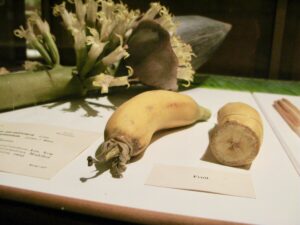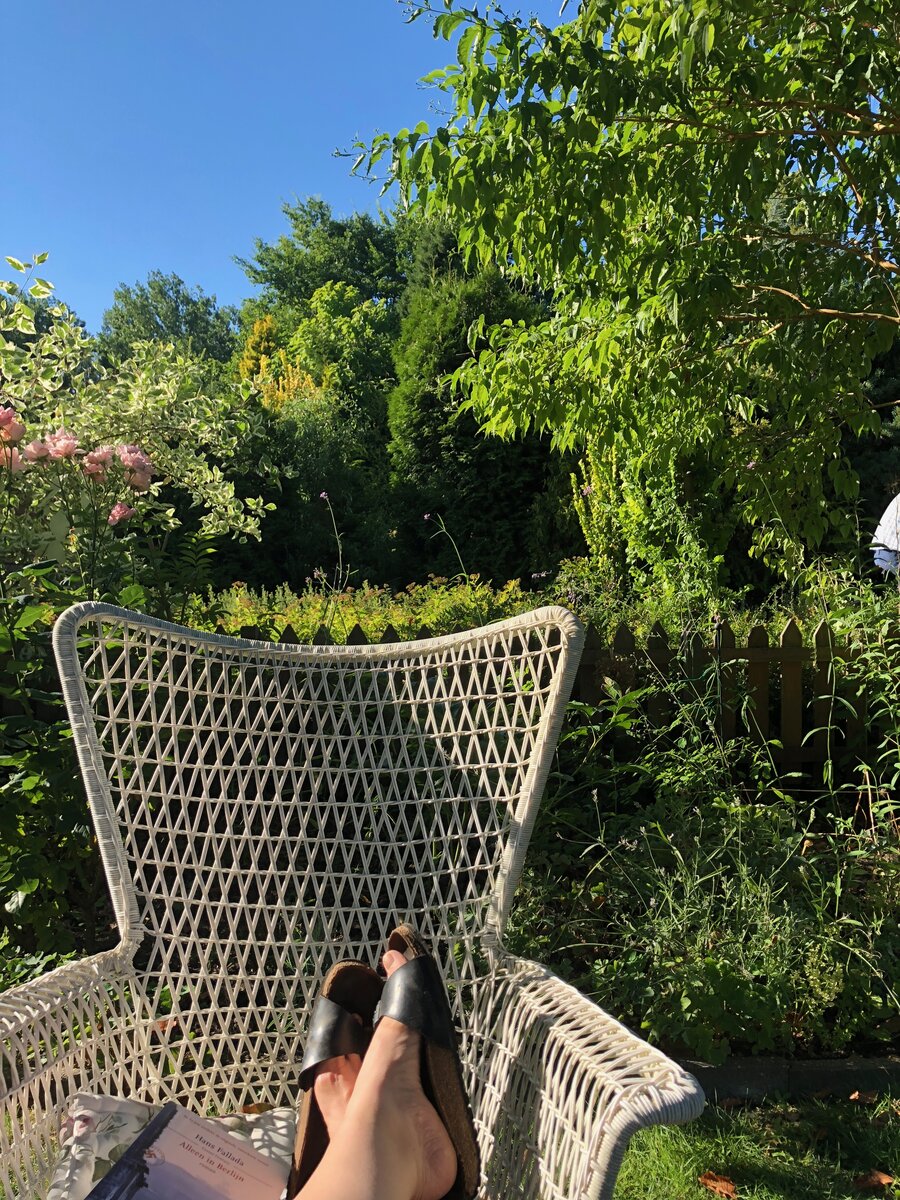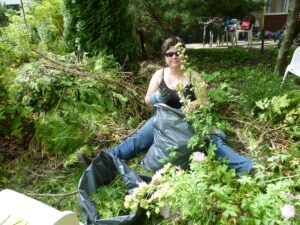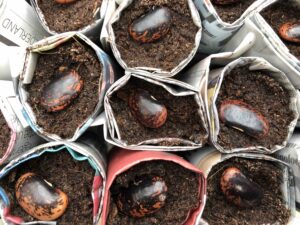Back when I first got my garden, it was a neglected mess. So on a chilly spring day, I was ready to lock myself inside the warmth of the greenhouse while my husband dug up dozens of tree stumps outdoors. I had seedlings already starting, including Baker Creek heirloom moon and stars watermelons, cantaloupe and tomatoes.
My garden neighbor, the 80 year-old William, had told me that a former owner used to grow grapes in the greenhouse. By the time I got it, it was filled with a jungle of weeds and spider webs creeping over rusty old tools and an old hand-pushed lawn mover.
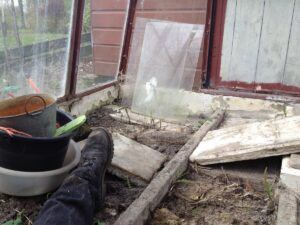
A small greenhouse, it’s about 2×2.5 meters (6.5x8ft), but pretty nicely built by someone who seemed to have known what he was doing. And I assume it was a he – I’ve heard stories about a previous owner whose mom spent the every season living in the garden house until she was 93. He built a lot of good stuff for her.
It’s an aluminum frame. It hadn’t rusted at all, even where the paint has chipped off. But the glass needed to be cleaned and caulked. Luckily all the panes were still in place, they were just cracked here and there (and I found replacement windows inside). All this rests on a solid concrete foundation that goes about 2ft into the ground. (I still automatically think in feet and inches, even though I’ve lived away from them a long time).
To the left of the door is an underground concrete box – maybe 4 feet deep – with a solid wood hinged top. I originally though it was a water well, because it was dark and wet at the bottom. But when I showed it to another senior neighbor, Andy, he picked up a rake, dropped it in and we heard a solid “thunk”. As it turns out, what I thought was water is just damp dead rollie pollies.
“It’s a ‘refrigerator’,” he told me. “They used in the old days before solar panels.” (There’s a small one under the floor in my garden house, too.) It’s so deep, I don’t know how you could really put it to use. If anyone has a clue, let me know…
Pretty much the entire greenhouse was paved with concrete tiles, which I removed, leaving just a path down the middle. Then I started digging up all the weeds: equisetum arvense (horsetail), aegopodium podagraria (bishops weed), some kind of lush and lovely green plant that grows in clumps of tiny annoying bulbs, and lots of tough stringy birch roots.
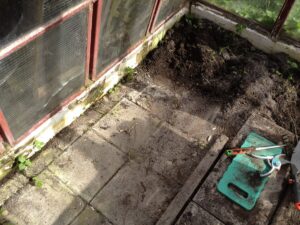
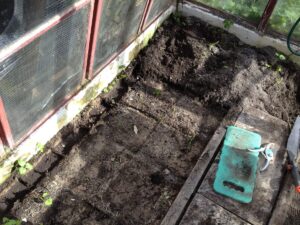
Thank goodness I am small and limber – sitting spread-eagle and digging the dirt between my legs has been the only real way to get the job done. The only tools I had at the time included a cheap trowel that had lost its rubbery handle, exposing a sharply cut metal that quickly gave me blisters. A little hand rake I got from my dearly-departed mother-in-law that bent too easily. Some clippers (to cut through the roots) that I quickly dulled into ruination. And my iPhone music on shuffle.
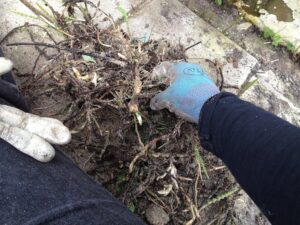
What with all that thick black clay, it was easier to to dig in with the hand rake, so I didn’t cut up the equisetum rhizomes – I raked and raked and raked to excavate the longest whole rhizome, because each little piece I missed or broke off would become a new horror. Then I ripped up the tree roots, which loosened the soil, revealed more rhizomes and helped move me along the greenhouse rows.
All in all, I spent a good 4 days clearing out that mess. My harvest was an industrial trash bag full of rhizomes and roots and a very sore back. Neighbors stopped by to look, and some admitted their envy. There aren’t many greenhouses in this part of our complex, and new ones are pricey.
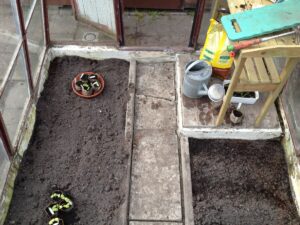
My inspiration can be found down the road, in the village of Schellingwoude – a garden that runs in a long narrow strips from the top of the dike down to the cute little church below. It’s super tidy, and towards the back is a greenhouse that, in the summer, bursts with tomatoes. That’s I want. A greenhouse on the dike to be proud of!





